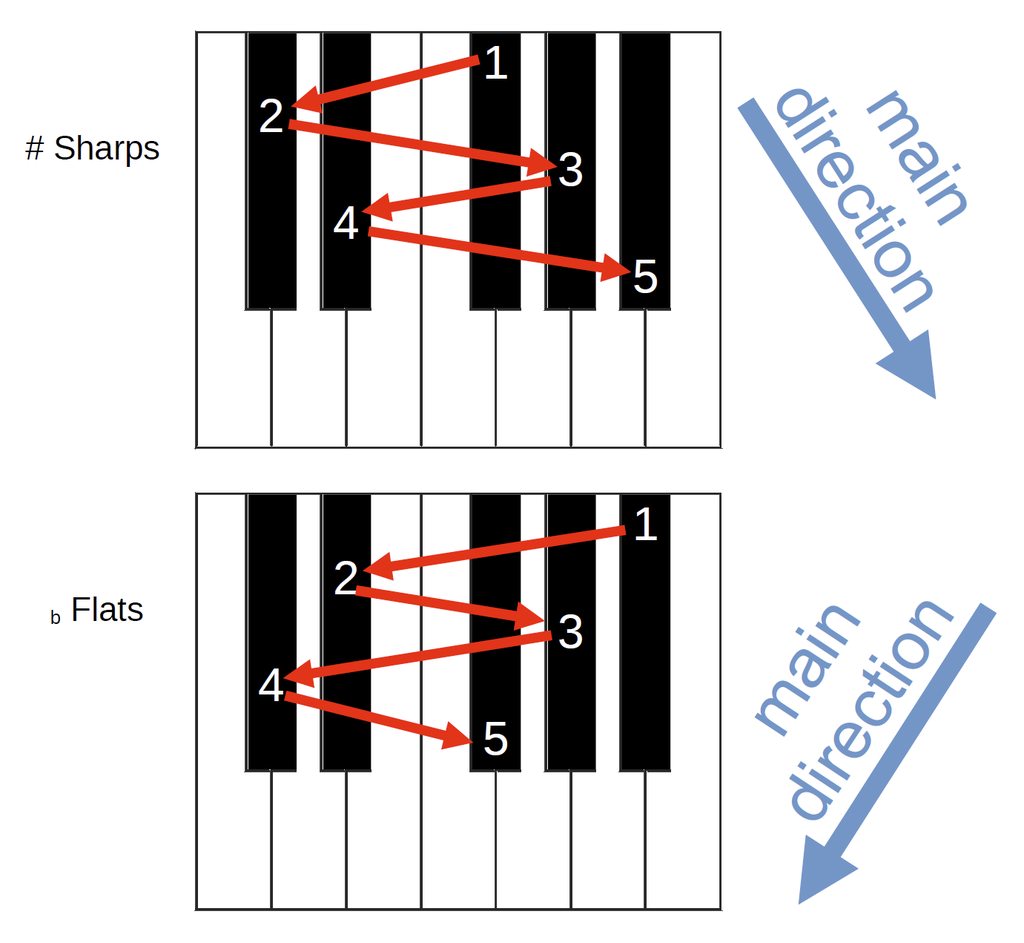BartK I was sight reading just now and I noticed that I'm applying accidentals subconsciously.
I must concentrate on the accidentals. And to the accidentals of the key, of course. But if I played a black note (e.g. F#) and I re-visit the same note shortly after, it is automated. Similar, like starting with a scale on a new key. The first runs are brain-work, but then the fingers can remember what they did a few seconds ago.
About keys and accidentals:
In the beginning I had a kind of a cheat-sheet to know what black keys to press at what amount of accidentals for flats and sharps. The only one I didn't need to look up something was the single F# and the single Bb. Maybe because I remembered this from my childhood playing accordion. I seldom played in a key with more than one accidental.
But during my sight-reading practice I figured out a very easy rule:
The black keys are always alternating between the 3-black-block and the 2-black-block. Of course starting on the 3-black block, otherwise the 2-black-block runs out of black keys.
And within each black block it is the same left/right order:
- # sharps from left to right
- b flats from right to left
And if I forget, I look to the keyboard and see with F# / Bb my first black key and know where to begin with.
Maybe I babble too much, this picture should illustrate what happens in my brain:

I know this might be trivial for those who are playing piano a bit longer or have had a good teacher or a good understanding in music theory. But for me this was very helpful.
Btw: if you press the keys in this order, it makes a nice sound. I assume this is related to the circle of fifths.